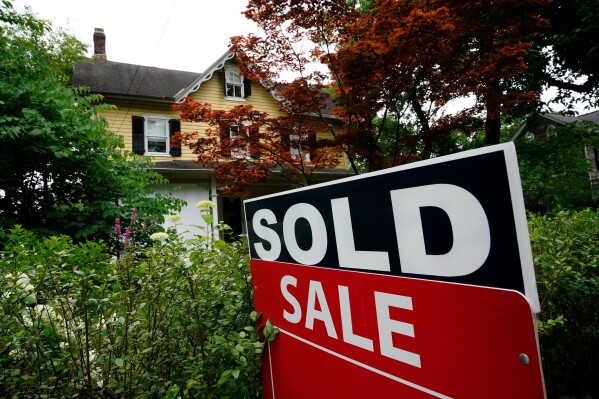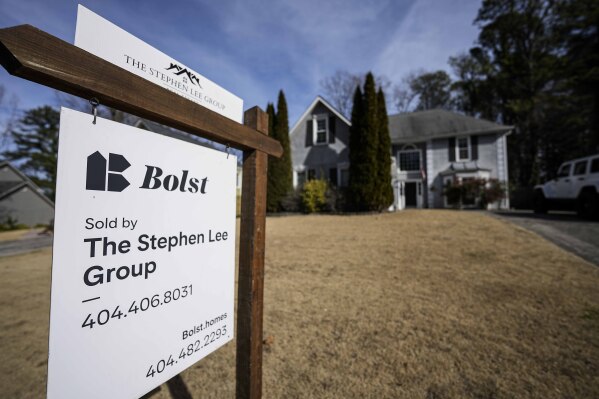Sluggish start for spring homebuying season as home sales fall in March with mortgage rates rising
LOS ANGELES (AP) — The spring homebuying season is off to a sluggish start as home shoppers contend with elevated mortgage rates and rising prices.
Sales of previously occupied U.S. homes fell 4.3% in March from the previous month to a seasonally adjusted annual rate of 4.19 million, the National Association of Realtors said Thursday. That’s the first monthly decline in sales since December and follows a nearly 10% monthly sales jump in February.
Existing home sales also fell 3.7% compared with March last year. The latest sales still came in slightly higher than the 4.16 million pace economists were expecting, according to FactSet.
Despite the pullback in sales, home prices climbed compared with a year earlier for the ninth month in a row. The national median sales price rose 4.8% from a year earlier to $393,500.
While the supply of homes on the market remains below the historical average, the typical increase in homes for sale that happens ahead of the spring homebuying season gave home shoppers a wider selection of properties to choose from.
At the end of last month, there were 1.11 million unsold homes on the market, a 4.7% increase from February and up 14.4% from a year earlier, the NAR said.



Even so, the available inventory at the end of last month amounted to a 3.2-month supply, going by the current sales pace. That’s up from a 2.9-month supply in February and a 2.7-month supply in March last year. In a more balanced market between buyers and sellers, there is a 4- to 5-month supply.
“Though rebounding from cyclical lows, home sales are stuck because interest rates have not made any major moves,” said Lawrence Yun, the NAR’s chief economist. “There are nearly 6 million more jobs now compared to pre-COVID highs, which suggests more aspiring home buyers exist in the market.”
Mortgage rates have mostly drifted higher in recent weeks as stronger-than-expected reports on employment and inflation stoked doubt among bond investors over how soon the Federal Reserve will move to lower its benchmark interest rate.
After climbing to a 23-year high of 7.79% in October, the average rate on a 30-year mortgage has remained below 7% since early December, but also hasn’t gone below the 6.6% it averaged in mid January. When mortgage rates rise, they can add hundreds of dollars a month in costs for borrowers, limiting how much they can afford.
Mortgage rates are influenced by several factors, including how the bond market reacts to the Federal Reserve’s interest rate policy and the moves in the 10-year Treasury yield, which lenders use as a guide to pricing home loans.
The yield on the 10-year Treasury jumped to around 4.66% on Tuesday — its highest level since early November — after top officials at the Federal Reserve suggested the central bank may hold its main interest steady for a while. The central bank wants to get more confidence that inflation is sustainably heading toward its target of 2%.
Disclaimer: The copyright of this article belongs to the original author. Reposting this article is solely for the purpose of information dissemination and does not constitute any investment advice. If there is any infringement, please contact us immediately. We will make corrections or deletions as necessary. Thank you.






